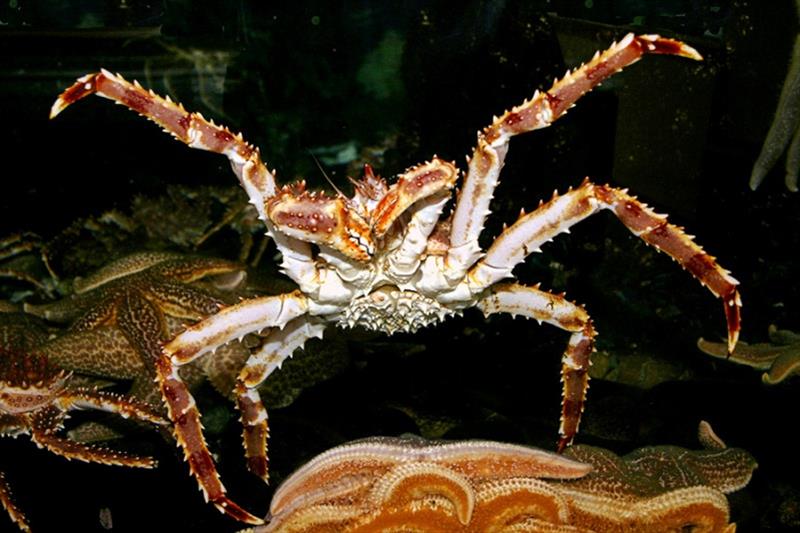
10 reasons king crabs rule
by NOAA Fisheries 25 May 2019 05:29 PDT

Red King Crab © NOAA Fisheries
Learn more about the role of red king crab in Alaska.
- Red king crabs are the largest of the commercially harvested crabs in Alaska, growing to 24 pounds with a 5-foot leg span.
- Historically, red king crab was the most commercially important shellfish species in Alaska.
- Red king crabs are armed with one large, heavy-duty claw for crushing prey, and a smaller claw for more delicate food handling.
- Red King crabs eat almost anything they can crush.
- A female can brood up to 500,000 embryos under her tail for a year.
- An adult crab molts its old shell and grows a new shell as many as 20 times in its life. To molt, the crab absorbs water until it swells up and bursts out of its shell.
- Large red king crabs are impervious to most predators, except when they have just molted but before the new shell has hardened.
- An adult male may migrate as much as 100 miles round trip a year.
- Red king crabs can live for 20-30 years.
- Red king crabs hang out in pods. Podding is an intensely gregarious behavior unique to red king crabs, which gather in extremely dense, cohesive social groups, year-round and day-to-day.
Additional Resources: